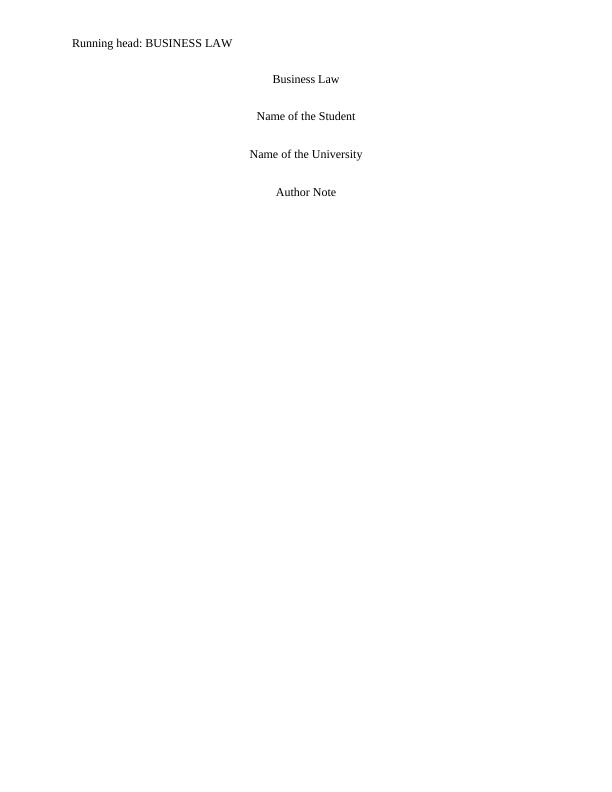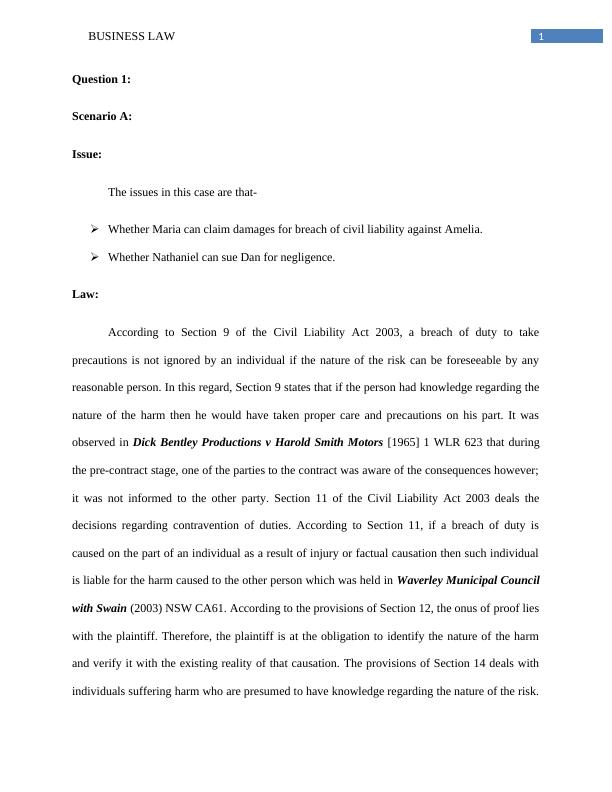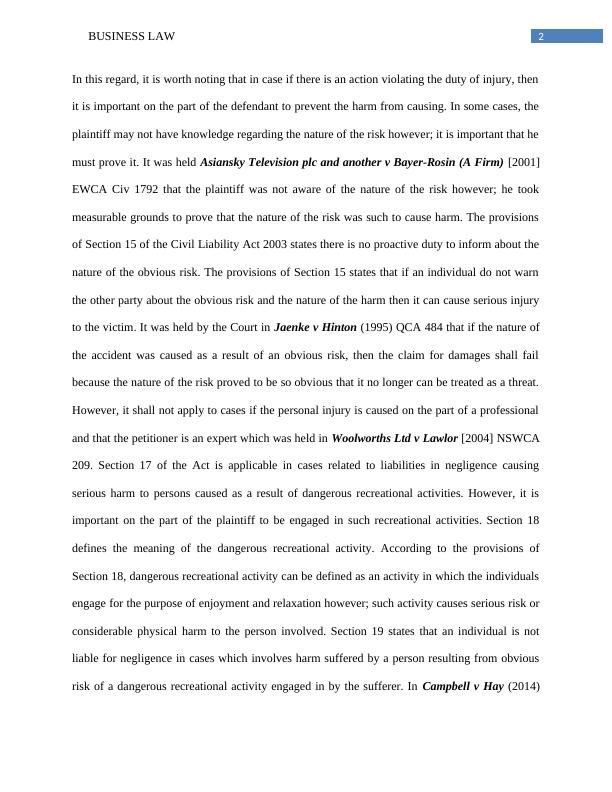Business Law: Breach of Civil Liability and Contractual Obligations
This subject examines key Australian legal concepts and principles directly relevant to business operations and their legal underpinnings.
10 Pages2561 Words421 Views
Added on 2023-06-13
About This Document
This article discusses the legal provisions related to breach of civil liability and contractual obligations in Australia. It covers scenarios related to negligence, dangerous recreational activities, revocation of contract, and guarantee agreements. The article also cites relevant case laws and journals.
Business Law: Breach of Civil Liability and Contractual Obligations
This subject examines key Australian legal concepts and principles directly relevant to business operations and their legal underpinnings.
Added on 2023-06-13
ShareRelated Documents
End of preview
Want to access all the pages? Upload your documents or become a member.
Assignment on Law Negligence
|13
|3690
|372
Business law in Organisation (Doc)
|8
|1379
|95
Negligence in Business Law: Case Study Analysis
|9
|1969
|56
Civil Liability of Organizations in Tort Law
|12
|898
|98
NEGLIGENCE Page 7 of 11 qwertyuiopasdfghjklzxcvbnmqwertyuiopasdfghjklzxcvbnmqwertyuiopasdfghjklzxcvbnmqwertyuiopasdfghjklzxcvbnmqwertyuiopasdfghjklzxcvbnmqwertyuiop
|11
|2440
|361
Case on Claim of Negligence
|11
|2433
|55



